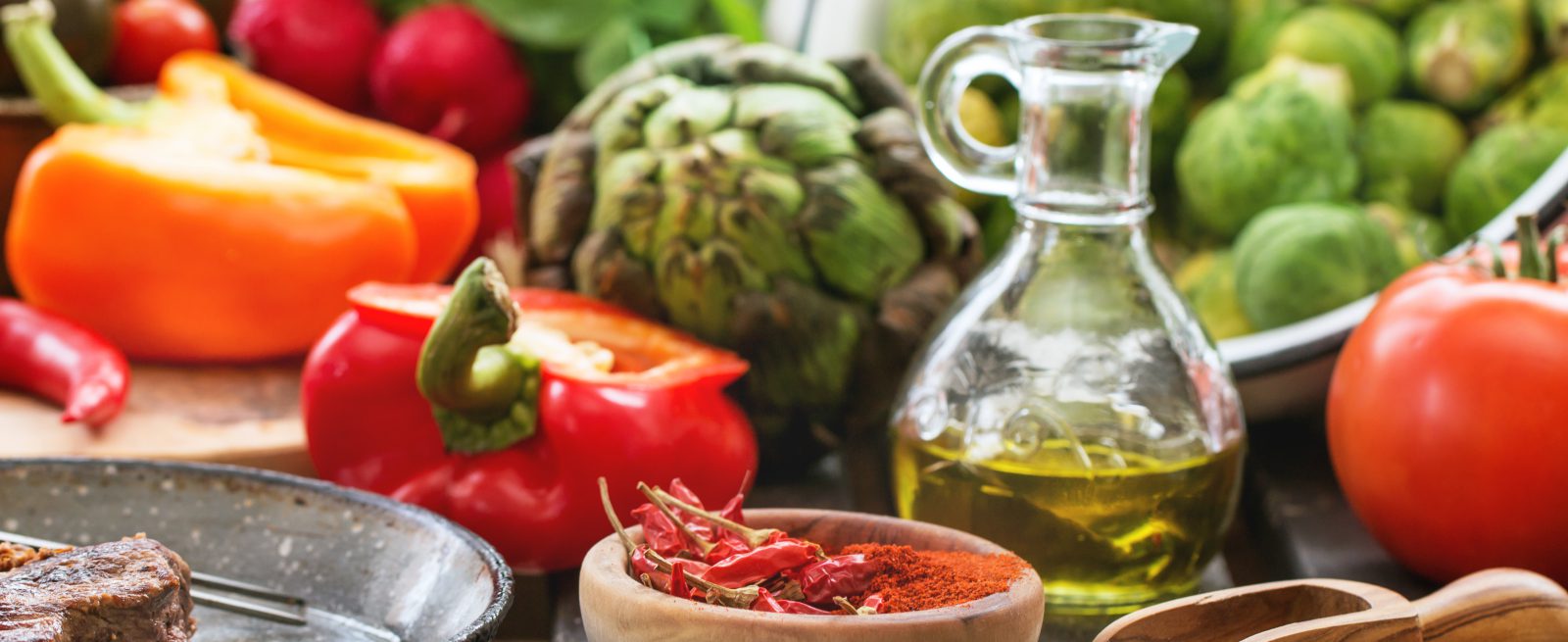Culinary Connections for 2016
5 Min Read By Justin Harkey
With the first half of 2016 in the books, this year’s culinary trends in food and beverage are coming into focus. Some are brand new, and some are continuations of trends that have been developing over the years, but all are having an impact on an influential and fast growing segment of the industry.
Innovation and creativity continue to loom large. Chefs, restaurateurs and hoteliers of our industry are challenging and satisfying hungry customers with inspired new concepts and creative reimaginings of traditional dishes and iconic cultural cuisines. The willingness to experiment—both on the part of chefs and diners—is clear, and healthy alternatives and organic ingredients continue to gain traction.
Vegetable as a Star
We’re seeing vegetables becoming more of a centerpiece as ‘root to stem’ and ‘vegetable forward’ dining gain momentum.
Growing numbers of diners no longer need to be encouraged by their parents to “eat their veggies,” as plant-based dishes seem to have reached a tipping point this year. In a fairly dramatic role reversal, vegetables are starting to push animal protein to the side, relegating traditional main courses into side dishes or complementary flavor/texture accents.
Whether it’s because of growing concerns about meat quality and safety—according to a survey of 1,000 U.S. adults conducted by Daymon Worldwide, one third of American shoppers say they are more concerned about food safety and quality today than they were a year ago—or part of a larger trend toward healthier eating, we’re seeing vegetables becoming more of a centerpiece as “root to stem” and “vegetable forward” dining gain momentum, and it’s clear that these movements are not just for vegetarians.
Vegetable appetizers are particularly prevalent and popular, and lend themselves to creativity and experimentation. The seasonal nature of fresh veggies—with a rotating cast of in-season favorites making for a varied and delicious progression of dishes throughout the year, is another appealing aspect of the emergence of vegetables on menus across the country.
Unblemished Foods
The organic trend is hardly new to 2016, but it’s noteworthy that we continue to see a strong push toward healthy, natural and organic foods. Shoppers and diners remain worried about chemicals, additives, GMOs and artificial ingredients, and that has translated into dining and spending decisions that reward organic menu items and dining concepts. In a recent survey, 40 percent of consumers reported that the use of all natural ingredients in food is very important to them, and chefs and restaurants are responding to that. Fast casual and convenience brands are not immune: names like Chipotle, Panera Bread, Subway, McDonald’s and Dunkin Donuts have all taken steps to purify their menus. From new dishes to entirely new dining concepts, organic is on the rise.
Eco-Friendly Awareness and Social Consciousness
Consumers are not just looking for good things on their plate, they are also raising their expectations with respect to the policies and practices of restaurants, hotels and food suppliers. Diners are rewarding brands that have prioritized water conservation, humane treatment of animals (and employees!), regulation of waste, and other eco-social issues.
Flavorful Snacking
The notion of a rigid three-meals-a-day model and the dangers of snacking are fast becoming antiquated concepts. The growing recognition that eating more often can actually be healthier is contributing to an industrywide refocusing on snacks and smaller portions. More Americans are snacking—and they are doing it more frequently. Healthy snacks with new and interesting flavors and textures—like dried and crunchy peas or edamame—are particularly popular, and new and different flavor combinations are making an appearance. In general, high-carb offerings are shifting to protein rich selections, and sweets are giving way to spicy, salty, savory and even sour snack options.
One of the most popular new snack concepts is the acai bowl, essentially a healthy “smoothie in a bowl”. Made from acai pulp and milk plus banana, bits of other fruits and lots of ice–along with topping choices that include things like chocolate chips, coconut flakes and peanuts–acai bowls are packed with both nutritious goodies and plenty of flavor. We are also seeing an increase of small plate offerings on menus, that allow not only a opportunity for costumers to snack rather than order a large meal, but to share with their dining companions.
Seasonal Variation
Foodie culture has begun to seep into our collective consciousness. With more refined palettes and higher expectations, creativity and seasonally changing menus are taking on more importance. Summer, for example, means BBQ time, which adds a whole new component to dining. Take stereotypically boring foods like Brussel sprouts and throw them on the grill and they have a completely different flavor. Summer also allows you to introduce fun and refreshing seasonal drink complements from classics like margaritas, mint juleps, and mojitos, to unique cocktails, craft beers, and fresh pressed fruit and vegetable juices and smoothies.
Revitalized Cuisines and Concepts
Chefs at restaurants and hotels around the country are embracing and re-embracing a range of traditional foods—using cultural traditions to inform their menu choices with concepts that include both faithful recreations and creative interpretations of longtime favorites. On some level, it’s about culinary storytelling and exploration, celebrating both the old and the new in exciting and delicious ways. In fact, according to the 2016 Food Travel Monitor study, 81 percent of the 2,527 respondents believe that eating and drinking help in understanding the local culture. Modern Jewish cooking is a great example of this kind of “heritage cuisine”, as is Poke, a traditional Hawaii cuisine made by chopping or cubing raw fish or cut into cube raw fish in a blend of marinade, spices and seasonings, and then served over flavored rice. Already in New York and LA, fast-casual Poke recently entered Chicago, with the opening of FireFin Poké Shop and Aloha Poke Co.
Digitalization
In 2016, tech-driven food ordering and delivery will continue to expand on a large scale. Delivery services and non-traditional providers are quickly becoming the big disrupter in the industry. As a kind of middleman operating between the customers and restaurants, these new services, such as UberEats, which provides high-speed delivery from restaurants, and Google and Amazon that are now delivering groceries, allow people to stay at home instead of going out to eat. The concern for restaurants and hotels is that they may begin to lose control of both the messaging and the marketplace, allowing outside agencies to influence their operation. Another popular concept is subscription-based food delivery brands (such as Blue Apron), with pre-portioned ingredients and recipes sent right to the doors of consumers.
On the Outs
Any discussion about what’s “in” also needs to touch on what’s “out.” Ultimately, understanding what consumers are moving away from can tell us just as much as what they are embracing. The “deconstructed” trend (the idea of breaking apart elements traditionally combined together to make a dish, and serving the items separately in a unique way) seems to be waning, part of a natural response to a trend that had almost begun to parody itself. And, in a more surprising turn of events, pasta might be slipping in popularity. A Baum + Whiteman article about 2016 F&B trends in restaurants and hotels, points out that pasta sales dropped 13 percent in Europe and 25 percent in Italy over the last five years. Here in the U.S., pasta is down a more modest 6 percent, as Americans eschew carbs and gluten and embrace proteins. Paleo diets and other carb-light approaches are also playing a role. Consequently, vegetable alternatives like spaghetti squash are on the rise, and more pasta dishes are going heavy on the vegetables and lighter on the noodles themselves.
Attracting the Culinary Traveler
Leisure travelers are proactively seeking unique and memorable food and beverage experiences while traveling. According to the 2016 Food Travel Monitor study, there is even a name for this group of individuals—Culinary Travelers. The study defines Culinary Travelers as leisure travelers that have both participated in a unique or memorable food or drink experience on a recent trip and for whom food or drink experiences are a prime motivator in choosing a destination. There is such a large Culinary Traveler demographic, that it is becoming more and more of a necessity for all hospitality establishments to keep up with trends and incorporate matchless food and beverage options into their menus.


